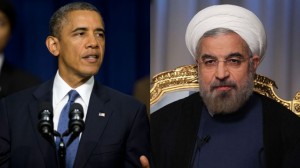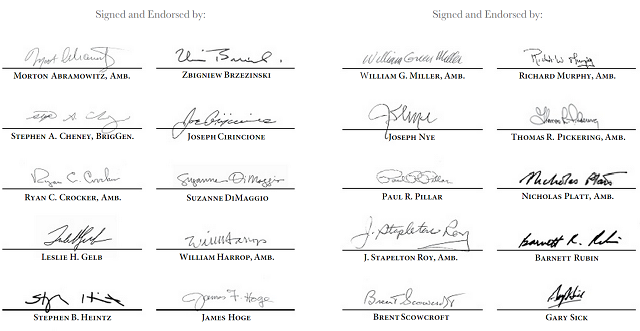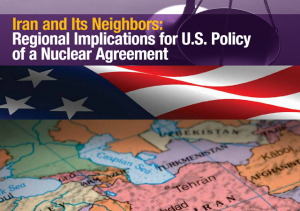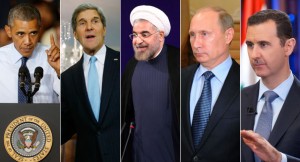UPDATE 8:30 PM Eastern, 10/10/14 – SUA has received further information in regard to the analysis in this posted article from multiple, high ranking sources in the Middle East that affirm that the United States, Saudi Arabia, Iran, and Turkey have agreed to allow Kobani to fall to the ISIS (Daesh) forces. They have decided to deal with ISIS later, and that the US will fall in line with decisions made by this group.
The intent is to allow Bashir al Assad to remain in power in Syria, despite Turkey’s protests to affirm that Iran will then control Syria and Iraq. Additionally, SUA was told that these leaders do not want the Kurds to ever have a formal state of their own despite its current semi-autonomous stature to placate the Turks and the Iranians. SUA also learned that aid from the United States is not being delivered to the Peshmurga (Kurds) in Northern Iraq but is being held in Baghdad to ensure this end.
Please read the original article as well:
Iran Wins, the World Loses – Thanks Mr. Obama
By Denise Simon – SUA Analyst and Associate Editor
Have you wondered why Barack Obama says that a war to crush Daesh (IS) may take as much as three years to contain their terrorism? Have you wondered why we will not commit ground forces?
Have you wondered why we never attempted to removed Bashar al Assad or clean up Syria? Have you wondered about the GCC and those relationships and why there are splits in relationships in the region?
The Obama administration is on a single tracked mission to have a ‘nuclear accord’ with Iran, and nothing will be allowed to impede this objective.
There will be no consideration for historical terror globally at the hands of Iran, no allowance for millions of Syrian refugees displaced throughout the region and no attention paid to 300,000 dead in Syria and Iraq.
All of these facts are dismissed at the hands of John Kerry and his carefully selected team to engage Iran and bring them into the worldwide community demanding that leadership of other countries accept this agenda.
It is proven that John Kerry, the White House, and the NSC knows very well why and the players include as many as 100 notable DC insiders, a team of people you need to reacquaint yourself with. It is an interesting mix of strange bedfellows.
First, the administration engaged a delegation out of Switzerland to open and prod talks with Iran. Then after Hillary Clinton, who virtually had no interest in the matter knowing she had future Oval Office dreams left, John Kerry mobilized this team.
They are seen here as signatories to a report produced by the Iran Project called “Iran and Its Neighbors: Regional Implications for U.S. Policy of a Nuclear Agreement.” It is a long and tedious read full of assumed conceptions, omissions, and a stark “new global ranking” philosophy. It clearly sidelines Israel and other major players and injects facts, where others or voided, which are not in evidence and ignores many facets that are terror/Islam related issues.
This analysis is on part four of a four part series signed by the following:
For next week: European Union foreign policy chief Catherine Ashton, Iran’s Foreign Minister Mohammad Javad Zarif, and US Secretary of State John Kerry will meet in Vienna next week, October 14-15. They have a looming deadline for a final nuclear deal with Iran less than two months away, European and Iranian officials said Wednesday.
US negotiators, including Deputy Secretary of State Bill Burns, Under Secretary of State Wendy Sherman, and senior advisor Jake Sullivan, will meet with their Iranian counterparts in Vienna on Tuesday Oct. 14, a day ahead of Kerry joining the Ashton Zarif meeting, the State Department said. The meetings come as there is a growing sense in the Washington policy community and beyond that concluding a comprehensive accord by the Nov. 24 deadline is unlikely.
So for some background here are some chilling facts gleaned from their report:
In 2002 George W. Bush called Iran as being a part of an “Axis of Evil” causing an escalation in hostilities between the United States and Iran. Since then, the Obama Administration has chosen to ignore the Bush proclamation and has engaged Iran in all aspects of middle east policy with sights on a nuclear weapons/enrichment accord.
There is no intention to stop the nuclear enrichment program but merely to contain it at a level that has not yet been determined. The U.S. using all the power-brokers listed above have purposely installed Iran as a peace partner and an emerging power in the Middle East. Through 2014-2016, Kerry et al, has deferred to Iran to maintain and manage al Qaeda and the Taliban in Afghanistan once we exit fully.
Today there is even chatter to remove Iran from being officially listed by the U.S as a ‘state sponsor or terror.’
John Kerry et al, have determined that Iran is now moderate and no longer a pariah such that all recent and future talks with Iran are aimed to integrate them into the world community on par with all other legitimate nations.
This is being accomplished by lifting sanctions, encouraging trade and investment in Iran, and by including Iran in not only on the diplomatic stage, but also militarily when it comes to Iraq and Syria.
At the behest of Iran, the U.S. has not taken on Syria or Assad fearing that it will fall further and become a failed state like Somalia. Syria is Iran’s beach-head. Early on, John Kerry asked Russia to take on Syria/Assad and work to impose a transitional government all for the sake of the ‘nuclear talks’. Russia declined.
It has been officially declared, though silently, that there is no military solution to Syria, either before or ‘after’ the nuclear agreement with Iran, and once the agreement is agreed to and signed, only then will a robust humanitarian solution begin at a Geneva lll meeting.
At that time, talks of a ‘unity’ state for Syria will begin and those invited to this future session will include: Saudi Arabia, Russian, Iran, Turkey, and Assad. In the meantime human slaughter continues in the region.
Israel is left out completely and after the nuclear accord is completed, the U.S. will then sell the program to Israel. Then they will sell it to Turkey to bridge all ‘gaps’ between Iran and Turkey, although those tensions have moderated since Erdogan was re-elected.
After this ‘nuclear accord’ is reached, the U.S. will aid Iran’s energy production to bolster Europe’s energy supply reducing their dependence on Russia. This will include pipelines, power grids, and natural gas delivery with cross border projects.
If no ‘nuclear accord’ is reached, certain blow-back triggers will begin and will include additional sanctions and renewed threats solicited from the West. At that point the U.S. will begin their blame game on Iran and will then reach out to Israel to clean up the mess militarily. Additionally, the U.S will threaten to wean herself completely from the Middle East interests for the next ten years.
The talks between the West and Iran are being positioned such that the entire plank is created and the approval and signing will go directly to Rouhani and Barack Obama. To date, Obama has successfully finessed and minimized Congress, Israel, and all lobby groups with regard to these talks.
There is only a feeble border between Afghanistan and Iran and Iran will use Afghani refugees as a bargaining chip in order to keep the new Afghan government in check economically as America and NATO exit the country and we will be taking our money with us.
To date, the John Kerry nuclear talks team has virtually ignored all countries in the GCC and Iran will be forced on those countries in spite of their positions today. Ignoring current and future ground conditions, the building of terror networks and the continued killing machines known as Daesh, along with al Qaeda factions merging, the outlook for global stability is grim such that even Leon Panetta and others have predicted a 30 year war.
John Kerry is playing a hidden hand with this nefarious objective such that the world is at risk due to Iran’s red carpet treatment at the hands of the Obama administration. Nuclear weapons are in the future for other countries due to Iran. This is not a Cold War Part Two building, rather it is a real hot war at genesis.
Here are some important excerpts to read from their report:
2.5.3 Improving reforms.
The Gulf States understandably fear Iran’s military capability, particularly its navy and ballistic missile arsenal; but the real threat is an ideological one. Gulf rulers believe that Iran is determined to subvert their domestic politics by exploiting aggrieved segments of their citizenry. One way to mitigate this challenge would be through domestic reform. This could help reduce Iran’s influence in internal Gulf State affairs. As of now, the kings and autocratic rulers in the region remain wary of an Iran that still symbolizes popular, Shi’ite-influenced revolution. U.S. encouragement of such reforms, while desirable, is problematic.
6.1.2 Syrian support during Iran–Iraq War.
When in 1980 Iraq invaded Iran, Saddam had been supporting the Muslim Brotherhood in an effort to topple Syria’s president, and Hafiz al-Assad at once committed his country to Tehran’s defense.1 Iran’s leaders named the war, which lasted until 1988, “the Sacred Defense” (of the revolution), and ever since has been meticulously building a Shi’ite sphere of influence. Called the “Shi’ite Crescent” by some detractors and the “Resistance Front” by those who belong to it, Iran’s network stretches across Iraq and Syria to the Mediterranean. The Resistance Front, which was originally made up only of Hezbollah and Syria but which today includes Iraq, has been a central pillar of Iranian defense since the Islamic revolution. Without it, Tehran believes that its enemies could further isolate Iran and even bring about regime change. As one local cleric recently explained, “If we lose Syria, we cannot keep Tehran.”2 Among Iranian leaders, this rhetoric is widespread. Major General Qassem Suleimani, the principal architect of Iran’s military effort in Syria and head of its Qods Force, has asserted, “Syria is the front line of the resistance.”3
8.2.4.b Evidence of Iran–Al Qaeda antagonism.
Documents captured from the 2011 Abbottabad operation that killed Osama bin Laden support the insurance/bargaining-chip interpretation. According to bin Laden’s letters, relations between Iran and Al Qaeda was hostile, characterized by disagreements over releasing Al Qaeda members and their families, as well as over covert actions taken by Al Qaeda against Iran. A complex series of negotiations and hostage exchanges, all detailed in bin Laden’s letters, confirms their antagonism. The relationship has become even more troubled since Hezbollah and Al Qaeda affiliates began killing each other in Syria.
8.3.1 Terrorist designation remains a major obstacle.
Any nuclear accord that includes significant relief from sanctions will have to deal with the fact that some sanctions against Iran enacted by Congress have been keyed to terrorism. Thus removing Iran from the State Sponsors of Terrorism list would be difficult. The relevant legislation requires that the Secretary of State provide evidence either that the state has a new government (as was the case in Libya and Iraq) or that it has not engaged in terrorist activities in the prior six months and is committed not to do so in the future (as was argued in de-listing North Korea). Neither is the case here. Meanwhile, the Iranian public’s expectations for relief from sanctions are a major factor moving the Rouhani government toward agreement. The sanctions linked to terrorism mean that, even if a nuclear deal is struck, the domestic politics in both countries may make it difficult to sustain a positive momentum. This could lead to a new phase of U.S.–Iranian tension.
________________
Edited and Posted by Scott W. Winchell





